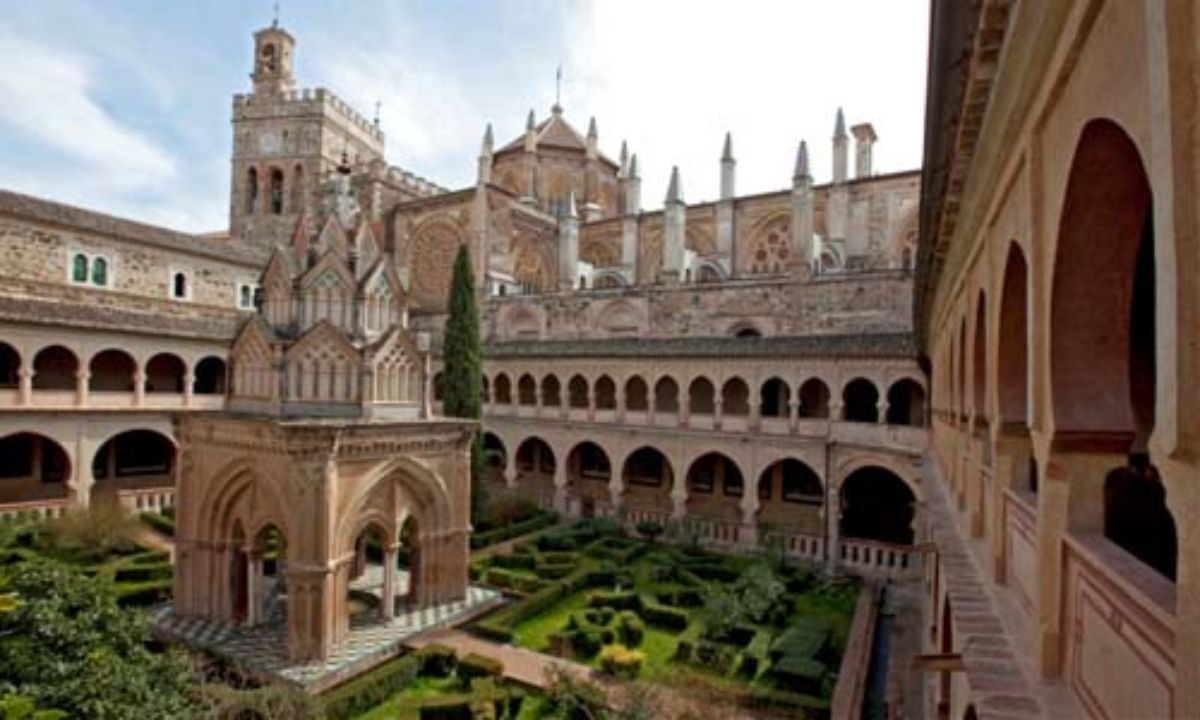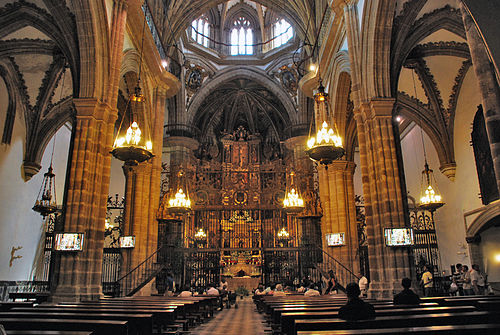Deep within the picturesque province of Cáceres, in the Extremadura region of Spain, the Royal Monastery of Santa María de Guadalupe stands as a testament to centuries of history, art, and faith. Overlooking a breathtaking valley and surrounded by majestic mountains, this UNESCO World Heritage site offers a unique blend of architectural styles, a rich historical narrative, and a profound spiritual atmosphere. The town of Guadalupe, which has grown around the Monastery since its foundation in 1337, adds to the charm with its traditional medieval buildings.

The Monastery is an exceptional example of an ensemble that encompasses a wide range of architectural styles, reflecting its long and storied past. The 14th and 15th-century Mudéjar church and cloister are particularly noteworthy, showcasing the intricate artistry of the period. Other architectural highlights include:
- The Basilica (Templo Mayor): The main church boasts a stunning Mudéjar façade, doors adorned with finely-worked bronze plaques, and an interior nave with richly ornamented vaulting and tombs.
- The Sacristy: Built between 1638 and 1647, the Sacristy is lavishly decorated and features a series of paintings by Zurbarán, as well as wall paintings that accentuate the austere lines of its architecture.
- The Chapel of Santa Catalina de Alejandría: This square building connects the Sacristy with the Reliquaries Chapel and features an octagonal cupola lit by a lantern. It houses remarkable 17th-century tombs and displays elaborate reliquaries and other works of art in its arcaded alcoves.
- The Camarín de la Virgen: A small octagonal building 1 behind the presbytery, the Camarín is richly decorated in Baroque style. The upper storey, known as the "Chamber of the Virgin," features vaults adorned with plaster and stucco, and walls covered with paintings, including nine by Luca Giordano. It houses the famed statue of the Virgin of Guadalupe on a magnificent throne.

- The Cloisters: The Mudéjar cloister, constructed in brick and painted in white and red, features a small chapel dating from 1405 and an impressive Plateresque portal from around 1520-24. The Gothic cloister has galleries on three sides with three tiers of arches, while the New Church, in a modified Baroque style, has three naves.

The Royal Monastery has played a significant role in Spain's history, particularly in its medieval and modern eras. It has been linked to the Crown of Castile since the reign of Alfonso XI. Its influence extended throughout the Iberian Peninsula, especially after the conquest of Granada, which led to the unification of all territories and the emergence of the Modern State.
The Monastery's impact on the evangelisation of the Americas was immense. Sanctuaries, institutions, and offerings were dedicated to the Virgin of Guadalupe, whose significance remains strong. The Monastery was also a leading cultural centre, fostering workshops and scientific activity. The Medical School of Guadalupe, first mentioned in 1451, and the School of Surgery contributed to the spread of knowledge in botany and medicine. Techniques in luxury goods and music were also applied and experimented with at the Monastery. Today, specific museums within the Monastery showcase this rich heritage.

The Royal Monastery of Santa María de Guadalupe is more than just a historical site; it is a living testament to faith and artistry. Its walls have witnessed centuries of devotion, and its beauty continues to inspire awe. It remains a significant pilgrimage destination for the Western world and Latin America, drawing visitors who seek spiritual solace and a connection to the past. The Monastery symbolises pivotal events in world history, particularly the expulsion of Muslim power from the Iberian Peninsula and Christopher Columbus's discovery of America in 1492. The statue of Santa María de Guadalupe became a powerful symbol of the Christianisation of much of the New World.
A visit to the Royal Monastery offers a unique opportunity to step back in time and experience the grandeur of Spanish history and the enduring power of faith. It is a place where art, architecture, and spirituality converge, leaving an indelible mark on all who enter its hallowed halls.